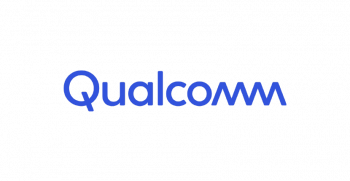Overview
ISMAR 2021, the premier conference for Augmented Reality (AR) and Mixed Reality (MR), will be held on October 4-8, 100% virtual. Note that ISMAR changed its submission structure this year and offers three distinct calls for journals, papers, and posters. This call is for submission to the conference paper track. See the ISMAR website for more information.
Important Deadlines
May 24th, 2021: Conference Papers abstracts due (REQUIRED).May 28th, 2021: Conference Papers submissions due.July 23rd, 2021: Conference Papers notifications.August 12th, 2021: Camera-ready papers due.
ISMAR is responding to the increasing commercial and research activities related to AR and MR and Virtual Reality (VR) by continuing the expansion of its scope over the past several years. ISMAR 2021 will cover the full range of technologies encompassed by the MR continuum, from interfaces in the real world to fully immersive experiences.
ISMAR invites research contributions that advance AR/VR/MR technologies, collectively referred to as eXtended Reality (XR) technologies, and are relevant to the community. Each research paper should report a validated contribution covering one or more of four styles of papers as follows:
- Methodological papers should describe advances in theories and methods of XR.
- Technology papers should describe advancements in algorithms or devices critical to XR.
- System papers should indicate how the developers integrated existing methods, algorithms, and technologies to produce an effective system, and convey any lessons learned in the process.
- Application papers provide an important insight to the community by explaining how the authors built upon existing ideas and applied them to solve a relevant problem in a novel way.
We welcome papers that provide contributions in more than one of these areas. Authors need to select a primary designation during the submission process. Each paper should include an evaluation of its contributions appropriate to its type and the current COVID-19 situation (e.g., user study, case study, expert user feedback, system comparisons, technical benchmarking). We understand that many researchers are currently facing major challenges with regard to in-person user evaluation. Thus we encourage authors to find alternative ways to validate their contribution, such as employing expert reviews, online studies, or qualitative studies.
Submission Details
We welcome paper submissions from 4-8 pages excluding references. Paper quality versus length will be assessed according to a contribution-per-page judgment. All submissions will be accepted or rejected as conference papers or poster papers (see 1).
- All accepted papers will have the opportunity to be presented as a demo/poster.
- All accepted papers will be archived in the IEEE Xplore digital library.
(1) Note that the poster submission track will run in parallel to the conference paper submission track and there will not be a poster submission deadline after the conference paper notifications. The conference paper track cooperates with the poster track and may accept submissions based on the merit of their contribution as posters; see details in the Author’s Guidelines.
Detailed submission and review guidelines are available on the conference website and the Guidelines section. Note that a paper abstract must be uploaded prior to the actual paper submission deadline (see submission deadlines). All paper submissions must be in English.
Topics of Interest
All topics relevant to and advancing AR, VR, and MR are of interest. VR papers are welcome regardless of their relevance to AR/MR. Topics of interest include, but are not limited to:
- Camera and projector-camera calibration
- Collaborative XR interfaces
- Computer vision
- Content creation / authoring and content management.
- Conversational and speech interfaces.
- Display technologies (e.g., eyewear, smart watches, projectors)
- Ethics & social implications
- Ergonomics and human factors
- Haptics
- Human-computer interaction
- Immersive visual analytics and visualization techniques
- Localization, spatial registration and tracking
- Locomotion and navigation techniques
- Machine learning / artificial intelligence
- Mediated and diminished reality
- Multimodal input and output
- Multi-user systems, distributed and networked systems.
- Omnidirectional, immersive videos
- Perception
- Presence, body ownership, and agency
- Rendering techniques
- Sensor fusion
- Spatial audio, auditory perception and psychoacoustics
- Spatial AR, projection mapping, projector-camera systems
- System & hardware architectures, real-time aspects.
- Touch, tangible and gesture interfaces
- Social implications
- Technology acceptance
- Teleoperation and telepresence
- Toolkits and software architectures
- User experience, usability studies and human-subjects experiments
- Underwater & space XR technologies
- 3D User interaction techniques
- Video processing and streaming
- VR simulations of AR/MR/XR
- Visual effects / video processing
- Virtual humans and avatars
- XR applications from domains such as
- Architecture
- Art, cultural heritage, education and training
- Automotive, aerospace, and other engineering domains
- Entertainment, sports broadcast
- Health, accessibility, wellbeing, and medical applications
- Diversity and inclusion
- Industrial, military, emergency response
- Therapy and rehabilitation
- Underwater & space science
- XR for COVID
- Further domains not listed above
We also encourage authors to submit emerging applications, technologies, and methodology papers addressing topics not listed above.
ISMAR 2021 Science & Technology Conference Papers Chairs
conference_paper_chairs@ismar21.org











